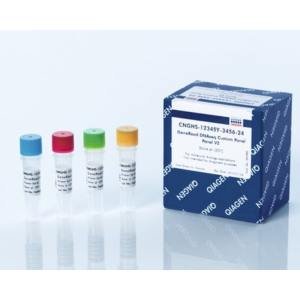Mechanism of Gene Regulation by Peroxisome Proliferators via PPARa(alpha)

The most recognized mechanism by which peroxisome proliferators regulated gene expresssion is through a PPAR/RXR heterodimeric complex binding to a peroxisome proliferator-response element (PPRE) (classical mechanism). However, there are the possibility of several variations on this theme: 1). The peroxisome proliferator interacts with PPAR that preexists as a DNA complex with associated corepressors proteins. The interaction with ligand causes release of the corepressor and association with a coactivator, resulting in the classical mechanism. 2). The peroxisome proliferator interacts with PPAR as a soluble member of the nucleus. The binding of ligand results in RXR heterodimerization, DNA binding and coactivator recruitment. 3). In this scenario, PPAR exists in the cytosol, perhaps complexed to heat shock protein 90 and/or other chaperones. Binding of peroxisome proliferator causes a conformational change and translocation into the nucleus. Scenarios 4 and 5 require regulation of gene expression via non-classical mechanisms: 4). PPAR is capable of interacting with, and forming DNA binding heterodimers with, several nuclear receptors including the thyroid hormone receptor. The binding site for this non-RXR heterodimer need not be the classic DR-1 motif found in the PPRE. 5). PPAR may participate in the regulation of gene expression witout binding to DNA. By association with transcription factors such as c-jun or p65, PPAR diminishes the ability of AP1 or NFB to bind to their cognate DNA sequences, respectively. Also shown in this scheme are two means to modify the peroxisome proliferator response. Most importantly, growth factor signaling has a pronounced affect on PPAR via post-translational modification. PPAR is a phosphoprotein and its activity is affected by insulin. Several kinase pathways affects PPARa's activity, although the specific kinases and phosphorylation sites have not been conclusively determined.
Contributor: Jack Vanden Heuvel
REFERENCES: Escher, P. and Wahli, W. Peroxisome proliferator-activated receptors: insight into multiple cellular functions. Mutat Res, 448: 121-138, 2000 Gelman, L., Fruchart, J.C., and Auwerx, J. And update on the mechanisms of action of the perxisome proliferator-activated receptors (PPARs) and their roles in inflammation and cancer. Cell Mol Life Sci, 55: 932-943, 1999 Kersten, S., Desvergne, B., and Wahli, W. Roles of PPARs in health and disease. Nature, 405: 421-424, 2000 Peters, J.M, and Vanden Heuvel, J.P. Peroxisomes, peroxisome proliferators and peroxisiome proliferator-activated receptors (PPARs). In: J.P. vanden Heuvel, G.H. Perdew, W.B. Mattes and W.F. Greenlee (eds.), Cellular and Molecular Toxicology, Vol. 14, pp. Peters, J.M, and Vanden Heuvel, J.P. Peroxisomes, peroxisom Vanden Heuvel, J.P. Peroxisome proliferator-activated receptors (PPARS) and carcinogenesis. Toxicol Sci, 47: 1-8, 1993




















